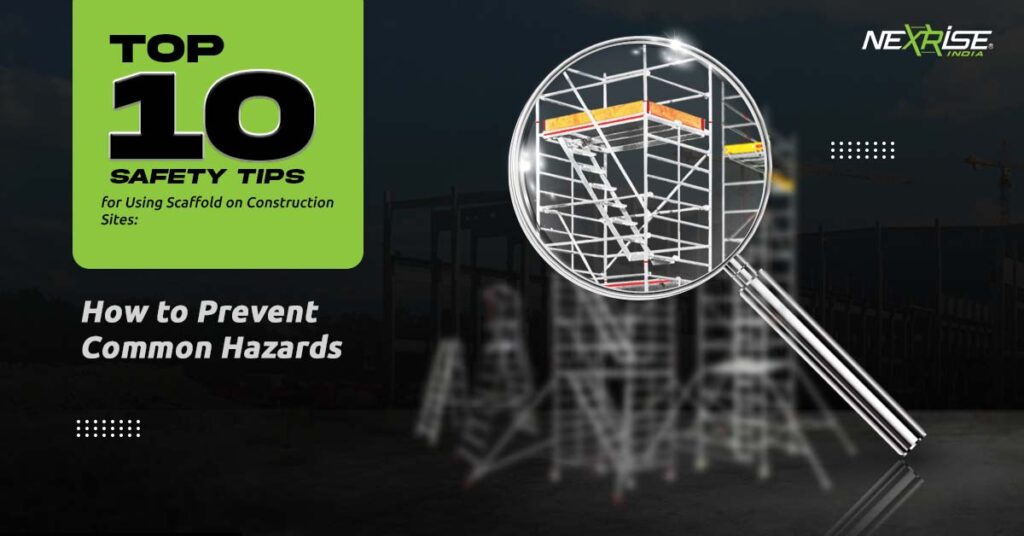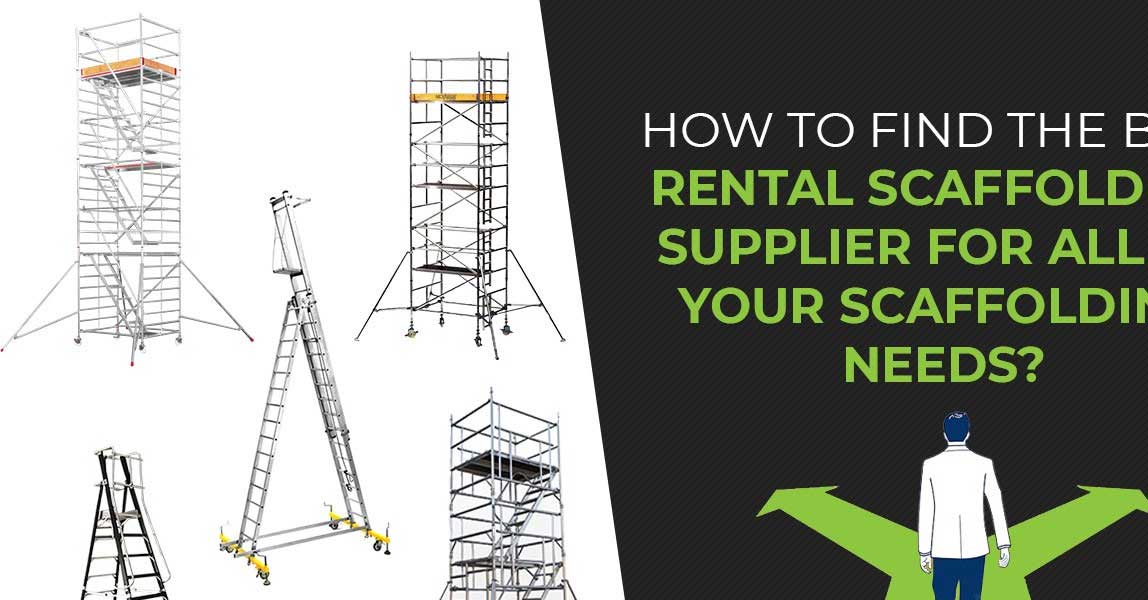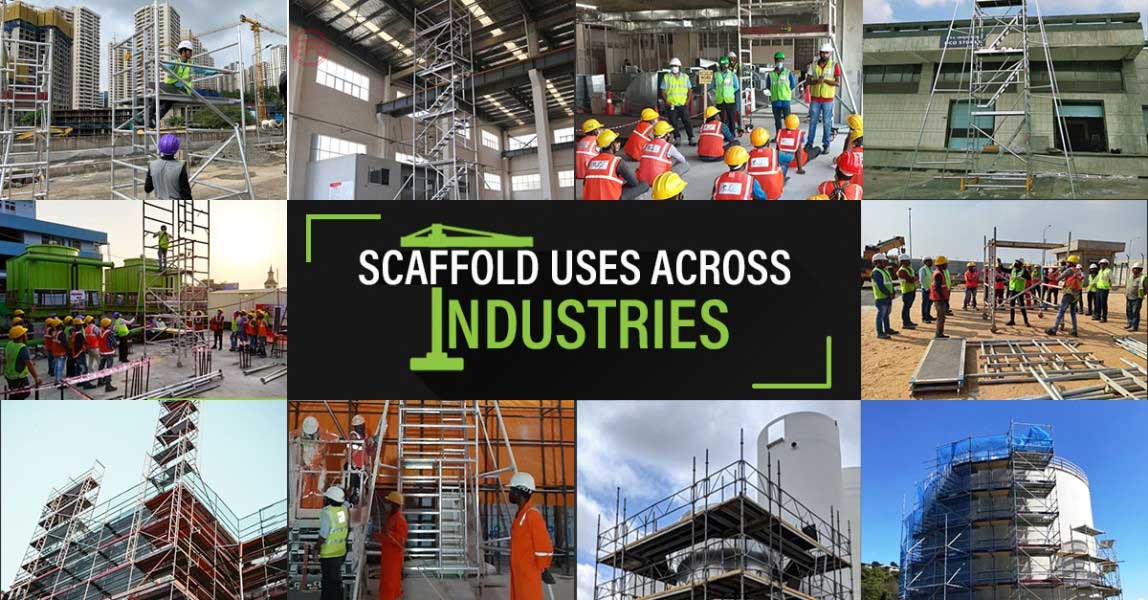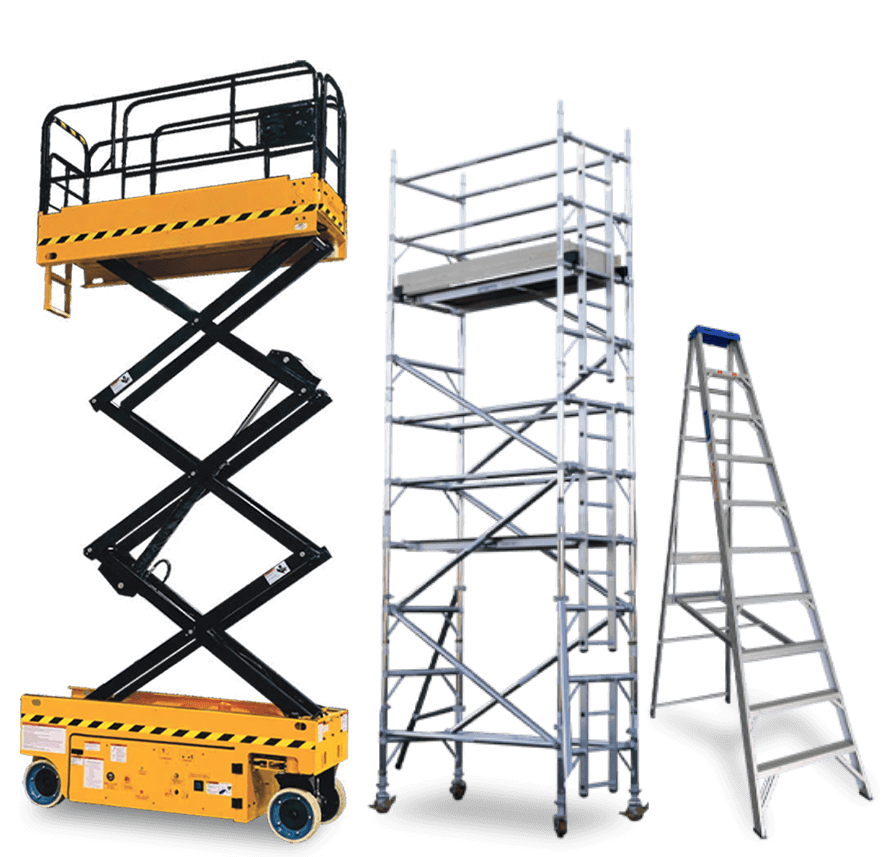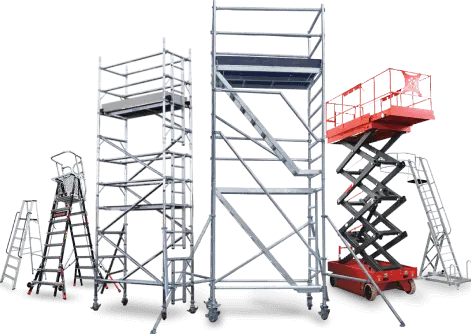When it comes to working on construction sites, safety is paramount. One of the most critical aspects of this is ensuring the safe use of scaffolding. Scaffolds provide essential support for workers, but they also pose significant risks if not used correctly.
Scaffolding safety Tips involves proper training, regular inspections, and adherence to safety protocols. By implementing effective training programs, scaffolding safety tips and maintaining rigorous safety standards, construction sites can minimize the risk of accidents and injuries associated with scaffolding.
Top 10 Scaffolding Safety Tips for Using it on Construction Sites
Here are the top 10 Scaffolding safety tips to help you prevent common hazards when using scaffolding on construction sites.
1. Proper Training and Certification for Scaffolding Use
Proper training and certification are foundational to scaffolding safety. They ensure that workers are knowledgeable about the correct setup, usage, and emergency procedures associated with scaffolding. Scaffolding accidents can have severe consequences, including injuries and fatalities, making it imperative that all personnel involved are adequately trained. This training should encompass understanding different scaffold types, recognizing potential hazards, and learning safe practices to minimize risks.
- Components of Effective Training: Effective training programs should cover scaffold assembly, disassembly, maintenance, and inspection. Workers should learn proper erection and dismantling of scaffolding, ensuring components are correctly assembled and fastened. Training should also include inspecting for defects or damage and emergency response procedures for scaffold collapses or other accidents.
- Ongoing Training and Refresher Courses: Construction safety evolves with new techniques and technologies, making ongoing training essential. These courses keep workers updated on the latest protocols, reinforce safety messages, and address any knowledge or skill gaps.
- Workers should understand different scaffold types and recognize potential hazards.
- Effective training should include scaffold assembly, disassembly, maintenance, and inspection.
- Certification involves both theoretical and practical assessments to ensure comprehensive knowledge and skills.
- Ongoing training and refresher courses help workers stay up-to-date with the latest scaffolding safety protocols.
2. Inspect Scaffolding Daily
Daily inspections of scaffolding are essential scaffolding safety tips for maintaining a safe work environment. Before each work shift, a competent person should check for any visible damage, wear and tear, or structural issues. Regular inspections help identify potential hazards and ensure the scaffold remains stable and secure for use.
- Daily Inspection Protocol: Inspect scaffolds daily for visible damage, wear, or structural issues, focusing on bent or broken components, loose connections, and the integrity of guardrails and toeboards.
- Identifying and Addressing Hazards: Focus on potential hazards like unstable bases, missing components, and improper assembly. Document and communicate issues, and ensure repairs are carried out promptly.
- Use of Inspection Checklists: Use checklists to standardize inspections, ensuring all critical points are examined. This helps maintain compliance and track scaffold conditions over time.
- Compliance with Regulations: Adhere to OSHA and other regulatory guidelines for scaffold inspections to ensure safety and legal compliance.
- Check for bent or broken components, loose connections, and the integrity of guardrails and toeboards.
- Use inspection checklists to standardize the process.
- Ensure compliance with OSHA and other regulatory guidelines.
3. Use Guardrails and Toeboards
Guardrails and toeboards are essential scaffolding safety tips for preventing falls and injuries. Guardrails keep workers from falling off the scaffold, while toeboards prevent tools and materials from falling and causing harm below. Regular inspections ensure these components are secure and in good condition.
- Role of Guardrails and Toeboards: Guardrails are essential for preventing worker falls by creating a barrier along the open sides of scaffolding. Toeboards are vital for keeping tools and materials from falling off the scaffold, thereby significantly reducing the risk of injuries to workers below.
- Guardrail Installation and Standards: Guardrails should be installed at heights of 38-45 inches above the scaffold platform, with midrails positioned halfway between the top rail and the platform for additional protection. These guardrails must be securely fastened and capable of withstanding at least 200 pounds of force, as specified by safety regulations, to ensure stability and reliability.
- Importance of Toeboards: Toeboards should be at least 3.5 inches high and firmly attached to the scaffold platform to effectively prevent objects from being accidentally kicked off. This is particularly important in busy construction sites where multiple levels of scaffolding are in use, as it helps maintain a safer working environment.
- Best Practices and Compliance: Adhering to best practices and OSHA standards when installing and inspecting guardrails and toeboards is crucial for scaffolding safety. Regular inspections should be conducted to ensure these components remain secure and functional, and workers should receive training on their importance to foster a culture of safety on-site.
- Guardrails prevent workers from falling and should be installed at specific heights according to scaffolding safety standards.
- Toeboards prevent tools and materials from falling off the scaffold, reducing the risk of injury.
- Regular inspections should ensure these components are not loose or damaged.
4. Ensure a Stable Base
A stable base is crucial for scaffolding safety, as it prevents tipping or collapsing. Use appropriate base plates or mudsills to distribute the weight evenly, and assess ground conditions to ensure they can support the scaffold. Regular inspections of the base components are necessary to maintain stability throughout the project.
- Importance of a Stable Foundation: A stable base is critical for scaffolding safety, as it supports the entire structure and prevents tipping or collapse. Utilizing base plates or mudsills helps evenly distribute the weight, especially on uneven or soft ground, ensuring the scaffold can safely support workers and materials.
- Selecting the Right Base Components: Base plates and mudsills play vital roles in stabilizing scaffolds. Base plates should be used on solid surfaces to prevent slipping, while mudsills are essential for softer grounds to avoid sinking. The choice of base component should match the scaffold’s height and load requirements, along with the specific ground conditions.
- Assessing Ground Conditions: Evaluating the ground conditions before scaffold setup is crucial to ensure it can adequately support the structure. The ground must be firm, level, and free from debris, and any irregularities can be corrected using adjustable base jacks or shims. Additionally, factors like moisture and frost should be considered, as they can compromise stability.
- Preventive Measures and Best Practices: Regular inspections of the base components and surrounding ground are essential to identify signs of instability, such as shifting or erosion. Promptly addressing these issues, along with anchoring tall scaffolds to stable structures, will enhance safety and ensure the scaffold remains secure throughout the project.
- Use appropriate base plates or mudsills to distribute the scaffold’s weight evenly.
- Assess ground conditions to ensure they can support the scaffold’s weight.
- Regularly inspect base components and the ground beneath the scaffold for signs of shifting, settling, or erosion.
5. Follow Load Capacity Guidelines
Understanding and adhering to load capacity guidelines is essential for scaffolding safety, as exceeding the maximum weight can compromise structural integrity and lead to accidents. Workers and supervisors must accurately calculate the total weight of personnel, tools, and materials on the scaffold, ensuring that this total does not exceed the posted load limits. Regular monitoring and clear communication of these guidelines are vital for maintaining a safe work environment.
- Understanding Load Capacity: Each scaffold has a maximum load capacity that includes the weight of workers, tools, and materials, and exceeding this limit can lead to instability and collapse.
- Calculating the Load: Accurate calculations of total weight are essential, factoring in all personnel and equipment, along with any potential dynamic loads from movement.
- Posting Load Limits: Load limits must be clearly displayed on the scaffold to ensure all workers are aware of the maximum safe weight, serving as a reminder to avoid overloading.
- Enforcement and Monitoring: Supervisors must monitor compliance with load limits through regular inspections and clear communication, especially when multiple trades share the scaffold, to prevent overloading and reassess capacity after configuration changes.
- Calculate the total weight on the scaffold, including workers, tools, and materials.
- Clearly post load limits on the scaffold for transparency and safety.
- Supervisors should actively monitor the scaffold to ensure load limits are followed.
6. Secure Scaffolding to the Structure
Securing scaffolding to the structure is crucial for maintaining stability and is a key scaffolding safety tip to prevent it from shifting or collapsing during use. This involves using appropriate tie-offs, anchors, or braces to connect the scaffold to the building or framework, ensuring it can withstand external forces like wind or vibrations. Properly secured scaffolding enhances worker safety and minimizes the risk of accidents on the job site.
- The Necessity of Securing Scaffolds: Securing scaffolding to adjacent structures is vital for stability and preventing tipping, particularly in high-wind or vibration-prone environments. Proper securing minimizes unintended movement and reduces the risk of accidents.
- Methods of Securing Scaffolding: Common methods include ties that connect the scaffold to the structure for lateral stability, braces that prevent swaying, and outriggers that widen the base for added support. Each method enhances the overall stability of the scaffold.
- Choosing the Right Securing Method: Selecting the appropriate securing method depends on the scaffold’s height, type, and environmental conditions. Safety standards dictate the regular interval placement of ties, especially for taller scaffolds, and additional supports may be needed in windy areas.
- Regular Inspection and Maintenance: Routine inspections are essential to check the condition of ties, braces, and outriggers for wear or damage. Compromised components should be replaced immediately, and any modifications to the scaffold should prompt a reassessment of securing methods.
- Use ties, braces, and outriggers to secure the scaffold.
- Choose the right securing method based on scaffold height, type, and environmental conditions.
- Regular inspections should ensure that all securing components remain in good condition.
7. Maintain Clear Access
Maintaining clear access to scaffolding is crucial for ensuring the scaffolding safety and efficiency of workers. Clear pathways allow easy movement of personnel, tools, and materials, reducing the risk of accidents and improving workflow. Additionally, unobstructed access is essential for emergency situations, enabling quick evacuations if necessary.
- Importance of Clear Access: Clear access to scaffolds is vital for worker safety and efficiency, allowing for quick movement and evacuation in emergencies. Cluttered access points increase the risk of trips and falls.
- Types of Access Points: Access can be achieved through ladders, stair towers, or scaffold stairs, with the choice depending on the scaffold’s height and the nature of the work. Stair towers are preferred for taller scaffolds for enhanced stability.
- Best Practices for Safe Access: Ladders and stairs should be securely fastened and regularly inspected, with access points well-lit and free from obstructions. Signage should clearly indicate access points and warn against unauthorized entry.
- Emergency Considerations: Emergency access and evacuation routes should be planned with multiple entry and exit points. Workers must be trained on evacuation procedures, and regular drills help ensure familiarity with emergency protocols.
- Ensure all ladders and stairs are securely fastened and regularly inspected.
- Keep access points free from obstructions such as tools, materials, or debris.
- Plan for emergency access and evacuation routes.
8. Wear Appropriate Personal Protective Equipment (PPE)
Wearing appropriate personal protective equipment (PPE) is a key part of scaffolding safety tips for protecting workers. This includes hard hats, safety glasses, gloves, and non-slip footwear to guard against hazards like falling objects, slips, and falls. Proper PPE not only enhances worker safety but also ensures compliance with safety regulations on job sites.
- The Role of PPE in Scaffold Safety: Personal protective equipment (PPE) is vital for safeguarding workers on scaffolds, as it reduces the risk of injuries from hazards like falls and falling objects.
- Types of PPE for Scaffolding: Essential PPE for scaffold work includes hard hats, non-slip footwear, safety harnesses, and protective eyewear, each serving to protect against specific workplace hazards.
- Proper Use and Maintenance of PPE: PPE must be worn correctly and maintained regularly; workers should be trained to ensure proper fit and to inspect equipment for damage, replacing any defective items immediately.
- Promoting a Safety Culture: Employers should foster a culture of safety by providing necessary PPE, enforcing its use, and encouraging workers to report issues or suggest improvements to safety practices.
- Required PPE includes hard hats, non-slip footwear, safety harnesses, and protective eyewear.
- Workers should receive training on how to properly fit and wear their PPE.
- Regular inspections of PPE are necessary to ensure it is not damaged or worn out.
9. Monitor Weather Conditions
Monitoring weather conditions is essential for scaffolding safety, as adverse weather can increase risks significantly. Factors such as high winds, rain, or snow can compromise scaffold stability and the safety of workers. Regularly checking forecasts and being prepared to halt work during severe weather can prevent accidents and ensure a safe working environment.
- Impact of Weather on Scaffold Safety: Weather can greatly affect scaffolding safety, with high winds, rain, and snow creating hazardous conditions. These elements can lead to instability, swaying, or slippery surfaces, increasing the risk of falls.
- Planning and Monitoring: Regularly monitor weather forecasts and adjust work plans accordingly. If adverse weather is expected, work may need to be postponed, and workers should be informed about potential risks and safety measures in place.
- Wind Loads and Scaffold Design: Scaffold designs must account for wind loads, especially for tall structures. Additional support may be necessary to ensure stability against wind forces, particularly when sheeting or other materials are used.
- Cold Weather Precautions: In cold weather, it’s vital to clear ice and snow from scaffolds to prevent slips. Workers should have access to proper PPE, like insulated gloves and footwear, to ensure safety and comfort in low temperatures.
- Regularly monitor weather forecasts and plan work accordingly.
- Scaffold design must consider potential wind loads, particularly for tall structures.
- In cold weather, remove ice and snow accumulation and use salt or sand to increase traction.
10. Implement a Safety Plan
Implementing these safety tips is crucial for creating a secure working environment on scaffolds. This plan should include detailed safety protocols, procedures for hazard identification, and emergency response strategies, ensuring that all workers are well-prepared to handle potential risks. Regular training sessions are also vital to keep everyone informed about best practices and safety measures. By fostering a proactive safety culture, employers can significantly reduce the likelihood of accidents and injuries on the job site.
A comprehensive safety plan is essential for the safe use of scaffolding on any worksite. It should outline the procedures for setting up, using, and dismantling scaffolds, as well as protocols for emergencies. A well-defined safety plan standardizes practices, reduces the risk of accidents, and ensures compliance with safety regulations. Additionally, by regularly reviewing and updating the safety plan, employers can adapt to changing conditions and continuously improve workplace safety.
- Outline procedures for setup, use, and dismantling of scaffolds, as well as emergency protocols.
- Regularly review and update the safety plan to incorporate new safety practices and technologies.
Conclusion:
In conclusion, adhering to the top 10 scaffolding safety tips for minimizing the risk of accidents and injuries on construction sites. These practices, which include proper training, daily inspections, and strict compliance with safety protocols, collectively contribute to a safer work environment. By prioritizing safety, workers and supervisors can ensure that everyone on site is protected from potential hazards associated with scaffold use.
Moreover, fostering a culture of safety requires the commitment of all team members. It is essential to recognize that safety is not just the responsibility of a few individuals; rather, it is a shared obligation among all workers. By actively engaging in safety measures and encouraging open communication regarding potential hazards, teams can create a more vigilant and proactive approach to safety, ultimately enhancing the overall well-being of everyone involved in the construction process.
Safety is paramount when working with scaffolding, just as it is when using ladders. Understanding the key differences between Step Ladders and Extension Ladders can help ensure that you choose the right tools and follow best practices, minimizing the risk of accidents and enhancing overall scaffolding safety on your construction site. check here all types of ladders available at nexrise india.
“Looking for scaffolding solutions? Contact Nexrise India for all your rental and sales needs!”
If you want to buy or rent our aluminium scaffolding. Feel free to call us! Read more: What are Scaffold Tagging and Types?

